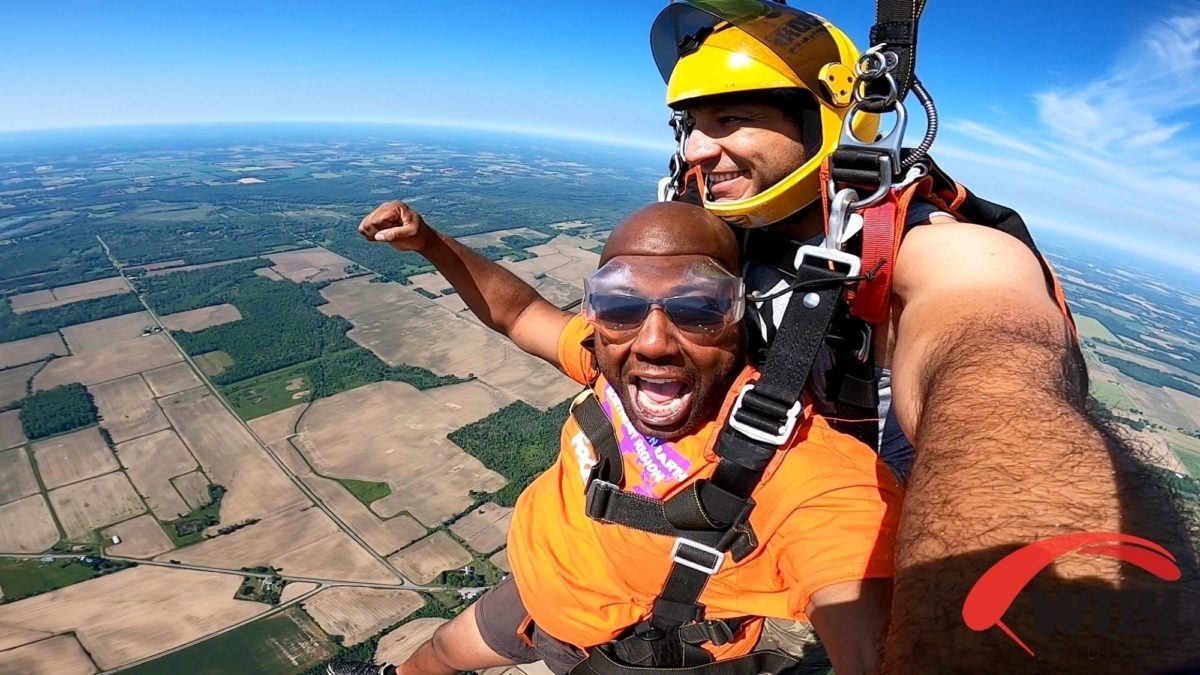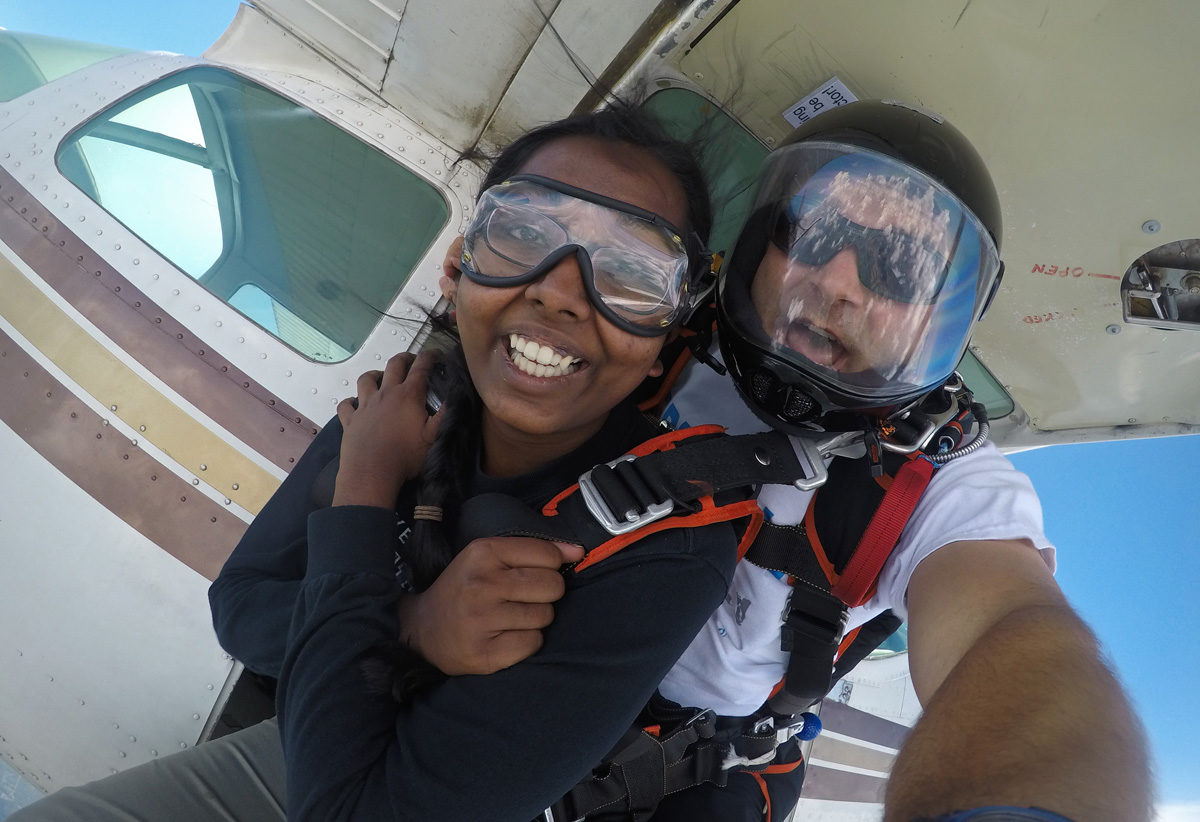So you’ve got everything all set for your skydive. You’ve booked your reservation, planned your day, picked out your outfit, and then you realize… will your glasses be an issue on the jump? Can you skydive with contact lenses?
You are going to want to actually see the incredible views of Lake Ontario – you don’t get a 10,000+ ft perspective every day – but is it comfortable or even safe to skydive with glasses and contacts?
We’ll fill you in so you can clearly know… and clearly see!
Can You Skydive With Glasses?
If you wear glasses, there’s no need to fret! You CAN skydive with glasses.
However, if you can see pretty well without your glasses, then we might recommend not wearing them on the jump. It is typically a good rule to not bring anything up that you wouldn’t want to lose on the way down. Since you’re falling about 120 mph during the freefall part of your skydive, anything that is not attached to you has the potential to fly off.
We know… skydiving doesn’t sound very glasses-friendly, but we want you to be able to see what’s happening on your jump! So if you need glasses, then we have solutions.
Every tandem student wears skydiving goggles for the jump, which have an adjustable strap that you can tighten. These goggles will cover your glasses and hold them snugly to your head. It is also a good idea to have an extra way to help keep your glasses on, like using eyewear retainers (aka Croakies, aka spectacle cords). The goggles combined with the Croakies should keep your glasses over your eyes where they belong.

Can You Skydive With Contact Lenses?
If you wear glasses but you have the choice to wear contact lenses, then opt for the contacts instead! While glasses could potentially fall off on your skydive, wearing contact lenses doesn’t require any special attention.
The only issue with contact lenses is that sometimes they can get dry and fall out, but the goggles you will be wearing should prevent the air from bothering your contacts too much. Plus, we can apply this super high-tech solution of putting tape over the vent holes to stop incoming air from drying them out!
Just in case, it could be good to bring along an extra pair of contacts or glasses, especially if you’ll be the one driving home.
Can You Jump After Lasik?
Once your eyes have healed from the Lasik procedure, then you should be totally fine to make a skydive as you normally would! It can take some time after the procedure, however, for your eyes to completely heal.
For the first month after Lasik, your eyes have got a lot of resting to do, but after about a month you can check with your doctor and see if they think your eyes are ready to make a jump. When you’ve reached the 6-month mark after Lasik, then your eyes are most likely healed and ready to take in the amazing skydiving views. If there is ever any health-related concern, then we recommend clearing the skydive with your doctor first.

Are Skydive Goggles Necessary?
Ok, so goggles make sense if you have corrected vision … but if you have perfect eyes that don’t require goggles to help secure your glasses or to keep your contacts from drying out, then do you really need to wear skydiving goggles? Yes, you do!
We know that they might not be the most attractive accessory, but we do require everyone to have some sort of eye protection. Wearing goggles can help shield your eyes from the elements and ensures that you can see on your jump. It can be pretty tough to see clearly when you’re falling at freefall speeds without goggles. Imagine that you’re in a car with your head out the window trying to keep your eyes open, only you’ll be going twice as fast!
Can I Wear a Full Face Helmet?
A full-face helmet has a shield over the front, fully enclosing the face. You will probably see some licensed skydivers wearing these when you come to make your jump. When these licensed jumpers wear a full-face helmet, they do not need to wear goggles because the helmet and shield keeps the wind from getting into their eyes.
As a tandem student, you cannot wear any type of helmet because your head is going to be positioned in front of and below your tandem instructor’s head. The no-helmets-for-tandem-students rule exists to make sure that you don’t accidentally headbutt your instructor, and also so that your instructor can see over your head!
Ready to seize the day? Come jump with us! We can’t wait to share the life-changing experience of skydiving with you!





